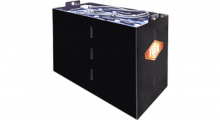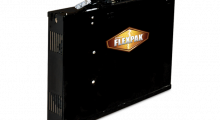HAWKER, a provider of stored energy solutions for industrial applications, announced it is taking industrial, electric-powered vehicle safety to the next level by obtaining UL 2580 Listing of its HAWKER FLEX Li3 lithium-ion batteries. Underwriters Laboratories (UL) is a global safety certification company that delivers Testing, Inspection, and Certification (TIC), training and advisory services worldwide.
The UL 2580 Listing applies to batteries in electric vehicles such as forklift trucks, automated guided vehicles (AGVs), and autonomous mobile robots (AMRs) used in the material handling industry. UL 2580 Listing includes the assessment of several safety protocols such as simulated abuse conditions, as well as electrical, mechanical, and environmental testing. With the UL 2580 Listing of HAWKER FLEX Li3 lithium-ion batteries, HAWKER adds that it is committed to providing safe, dependable, and resilient power solutions for material handling applications.
HAWKER added that its FLEX Li3 lithium-ion batteries, which combine the latest Li-ion chemistry with cost-effective modularity, are engineered with high performance cells to deliver high energy capacity in a smaller footprint. They are also designed to meet Automotive/Rigorous Functional Safety Standard ISO 26262.
“Our HAWKER FLEX Li3 lithium battery was engineered with the incorporation of the automotive safety standard ISO 26262, which integrates multiple safety redundancies, includes our integrated Battery Management System (BMS), and is now UL2580,” said Dean Portney, VP Sales & Marketing at Hawker. “We are delivering a lithium product which rises to the highest level of safety in motive power.”
HAWKER FLEX Li3 lithium-ion batteries feature an integrated Battery Management System (BMS) that supports greater safety, reliability and battery life by performing auto-diagnosis, voltage limitation (charge and discharge) and communication of performance data.
Article topics










